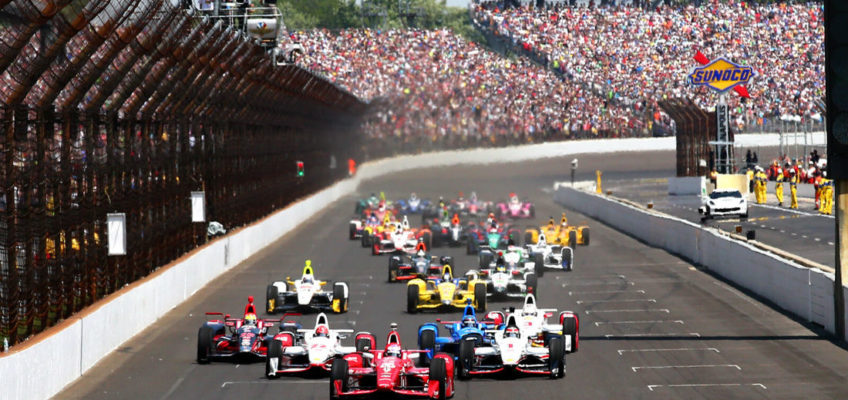It is not official yet but everything points to Fernando Alonso being the last of a long list of Formula 1 drivers to make the move to IndyCar. The list includes talents such as Jim Clark, Graham Hill, Mario Andretti, Emerson Fittipaldi, Jacques Villeneuve or Juan Pablo Montoya.
For those unfamiliar with IndyCar this is therefore a good time to learn a bit more about this American competition, and get a better understanding of what makes it so attractive to both drivers from other disciplines, and loyal fans.
The basics
The IndyCar Series is the most popular single-seater competition in the United States and its star race is the 500 miles of Indianapolis. Every year 300.000 fans head to the Indianapolis Motor Speedway to watch the event which, together with the Monaco Grand Prix and the 24 hours of Le Mans, makes up the famous «Triple Crown».
There were 19 races in the 2018 season which quite uniquely, are disputed in a variety of circuits: super-speedways, short ovals, street circuits and mixed circuits. Inside IndyCar, there are other three categories which nurture the future racing talent: The Indy Lights, The Pro Mazda Championship and the United States Formula 2000.
Indy cars are open-cockpit single-seaters with a 2.2-litre, twin-turbocharged, direct-injected V-6 engine and an estimated 500-700 horsepower. At the oval circuits, they run at an average speed of 350km/h whereas in Formula 1 this is about 210km/h. At the same time and also contrary to Formula1, all IndyCar vehicles have the same chassis (with different aero kits) and they all use Honda or Chevrolet engines. Another key difference with F1 is that Indy cars have a push-to-pass button on the steering wheel to be used in overtakings, which temporarily increases the car’s power.
IndyCar follows a point system similar to that of F1. The winner gets 50 points, the second 40 points, the third 35 points and the fourth 32. From the 5th to the 10th they are given 2 points less descending each and from the 10th until the 25th one less until you get to 5 points, which are given to everybody that finishes the race. The 500 miles of Indianapolis and the final at the Sonoma Raceway give double points.
The 2018 season
The 2018 season is coming to an end this 17th of Septembre at the Sonoma Raceway. In a striking contrast with F1, there are still four mathematically possible winners with just one race to go: leader Scott Dixon (Chip Ganassi Racing); Alexandre Rossi (Andretti Autosport) 29 points behind; Will Power (Team Penske) 58 points below and lastly, last year’s winner Josef Newgarden (Team Penske) with the same points as Power.
This level of competitiveness and the feeling that ‹anything can happen› also differs to the predictability of Formula 1 and the hegemony of the two wealthiest Scuderias over the sport. In the words of Alonso himself, the sex-appeal of IndyCar has to do with the ‹autenthicity › of the machines against the sophistication and precision of the F1 single-seaters:
“Here (it) is just more raw. Everything is more racing. It’s definitely faster and different. But at the end of the day, we all started in go-karts. We all started in the small categories that probably we miss that kind of feeling when you get to Formula One and you have everything under control, you know, every single millimetre or every single tenth of a second.
“Here it’s more driver input (…)”
We leave readers to draw their own conclusions, but, in any case, it is never too late to discover a new discipline…
ByT.C. | Photo: The Zebra





Leave a Reply